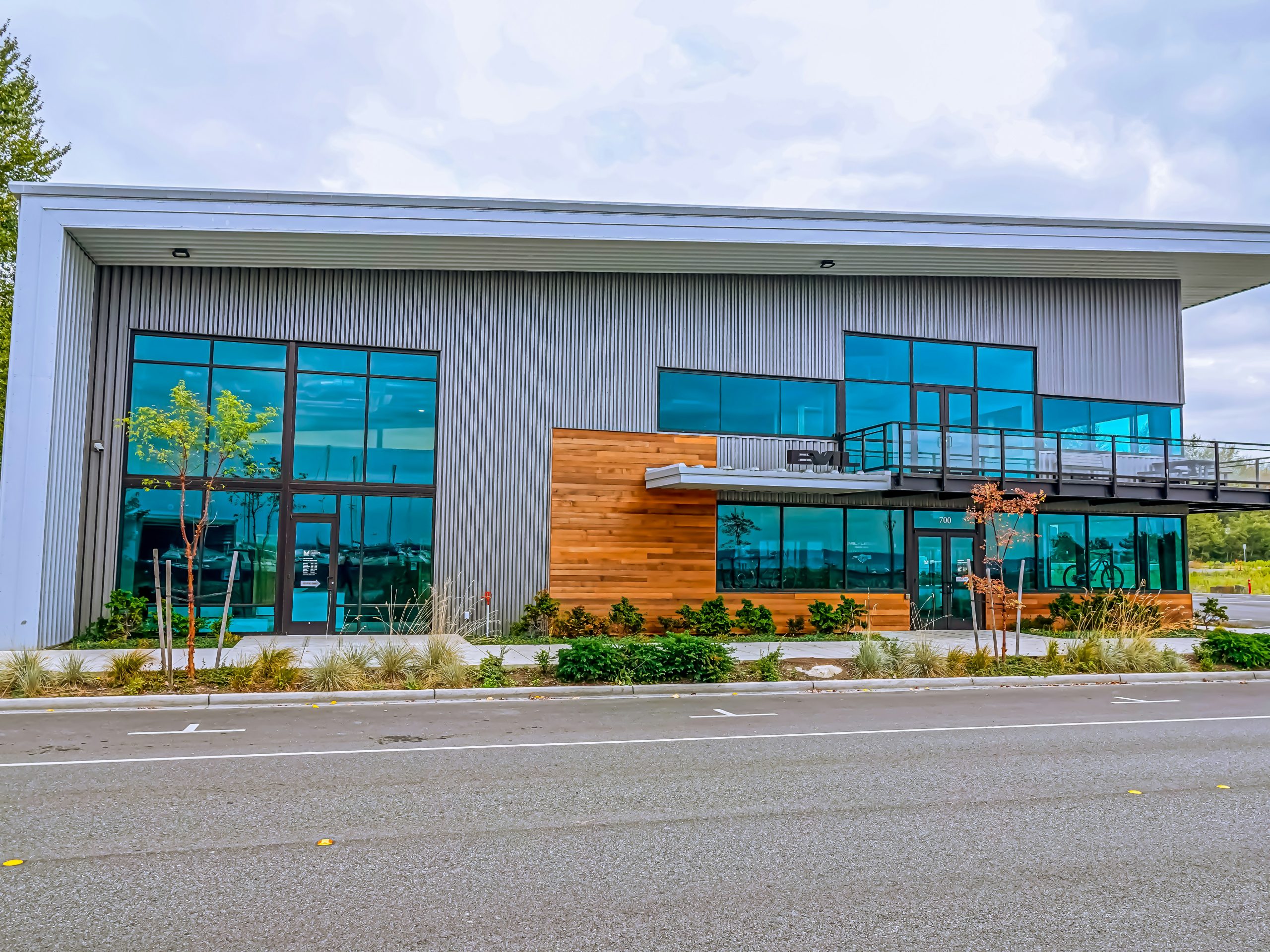We all know the importance of sustainability in today’s world, but there’s a lingering myth that eco-friendly equals expensive. Let’s delve into how sustainable architecture can actually save us money while benefiting the environment. By embracing smart design principles, utilizing energy-efficient materials, and leveraging renewable resources, we can build economically viable green structures that stand the test of time. Our exploration reveals how thoughtful planning and innovative technologies can make sustainable architecture an affordable and practical choice for us all. How can sustainable architecture be cost-effective?
That’s a question we’ve found ourselves asking quite often. In a world increasingly conscious of environmental impact, sustainability is no longer a buzzword—it’s a necessity. But when we hear “sustainable architecture,” many of us probably think that it comes at a higher cost. Is that really the case? And if not, how can we make these sustainable choices without breaking the bank?
Understanding Sustainable Architecture
First, let’s get on the same page about what sustainable architecture is. Sustainable architecture is a design philosophy aimed at minimizing the negative environmental impact of buildings through efficiency and moderation in the use of materials, energy, and developmental space.
Principles of Sustainable Architecture
- Energy Efficiency: Using design strategies to optimize energy use in buildings.
- Building Materials: Utilizing renewable, recycled, or low-impact materials.
- Water Efficiency: Implementing ways to use and manage water more effectively.
- Indoor Environmental Quality: Ensuring that interior spaces are healthy and comfortable.
- Waste Reduction: Minimizing the waste produced during construction and throughout the building’s life cycle.
Understanding these principles helps us realize that sustainable architecture is not just a fanciful concept but a practical approach to building design.
The Misconception of Higher Costs
The perception that sustainable architecture is more expensive is common. However, it’s essential to differentiate between initial costs and long-term savings. While some sustainable materials and technologies may initially cost more, they often result in significant savings over time.
Initial Costs vs. Life Cycle Costs
| Aspect | Traditional Building | Sustainable Architecture |
|---|---|---|
| Initial Investment | Generally Lower | Possibly Higher |
| Operating Costs | Higher (due to inefficient systems) | Lower (due to high efficiency) |
| Maintenance Costs | Moderate to High | Lower due to durable materials |
| Life Cycle Costs | Higher | Lower owing to operational savings |
As we can see, the initial investment might be higher, but the overall life cycle costs of sustainable architecture are lower. Let’s explore how we can leverage this understanding to make sustainable architecture cost-effective.

Strategies for Cost-Effective Sustainable Architecture
Here are some strategies we can adopt to balance costs while committing to sustainability.
Efficient Use of Materials
Using local resources reduces transportation costs and carbon emissions. Additionally, choosing materials that are renewable or recycled can bring about significant savings.
Examples of Efficient Material Use:
- Bamboo: It’s fast-growing and durable, making it a great alternative to wood.
- Recycled Steel: Using recycled steel reduces the need for new production, which is both cost-effective and environmentally friendly.
- Hempcrete: A mixture of hemp and lime, hempcrete is highly insulating and requires less energy to produce.
Integrated Design Process
By involving all stakeholders— from architects and engineers to contractors and future building operators—early in the design process, we can identify synergies that save costs and enhance sustainability.
Steps in Integrated Design:
- Set Clear Goals: Define sustainability and cost-efficiency objectives from the outset.
- Collaborate Early: Bring together all parties in the early stages to brainstorm and problem-solve.
- Use of BIM: Building Information Modeling (BIM) helps detect issues early, reducing costly revisions later.
Energy Efficient Designs
Passive solar design, proper insulation, and modern HVAC systems can drastically cut down energy consumption. While the upfront cost may be higher, the savings in energy bills make up for it.
Key Elements of Energy-Efficient Designs:
- Passive Solar Heating: Designing windows and materials to absorb and distribute solar energy during winter.
- High-Performance Insulation: Reducing heat loss in winter and keeping interiors cool in summer.
- Smart HVAC Systems: Modern systems that adjust based on real-time needs, reducing wasted energy.
Renewable Energy Options
Utilizing renewable energy sources such as solar panels or wind turbines can reduce or eliminate electricity bills over time. Government subsidies and incentives can also offset the initial installation costs.
Renewable Energy Solutions:
- Solar Panels: These can often fulfill most, if not all, of a building’s electricity needs.
- Wind Turbines: Suitable for areas with consistent wind conditions.
- Geothermal Systems: Using ground-source heat pumps can be a cost-effective and efficient choice.
Water Conservation
Water-efficient appliances, rainwater harvesting systems, and greywater reuse can significantly reduce water usage, which again translates into cost savings over time.
Methods of Water Conservation:
- Low-Flow Fixtures: Toilets, faucets, and showerheads that use less water.
- Rainwater Harvesting: Capturing and using rainwater for non-potable applications like irrigation.
- Greywater Systems: Treating and reusing water from sinks, showers, and washing machines for toilet flushing or landscape irrigation.
Certification Programs
Investing in certifications like LEED (Leadership in Energy and Environmental Design) can seem costly initially, but these certifications often lead to higher property values and can also qualify us for financial incentives.
Notable Certification Programs:
- LEED: Offers points for different sustainable strategies.
- BREEAM: A comprehensive assessment for sustainable building practices.
- WELL: Focuses on enhancing occupant health and wellbeing.
Case Studies
Let’s dive into a few real-world examples that illustrate how sustainable architecture can be cost-effective.
BedZED (Beddington Zero Energy Development)
Located in London, BedZED is the UK’s largest mixed-use sustainable community. Built in 2002, it incorporates numerous eco-friendly practices and has shown significant long-term cost savings.
Highlights from BedZED:
- Solar Panels: Reduced energy dependency.
- Water-saving Appliances: Lower water bills.
- Locally Sourced Materials: Reduced transportation costs.
- Community Heating System: Increased efficiency and reduced costs.
The Bullitt Center
The Bullitt Center in Seattle is often referred to as the greenest commercial building in the world. It’s designed to be net-zero for energy, water, and waste.
Highlights from The Bullitt Center:
- Deeply Insulated Building Envelope: Minimizes energy loss.
- Rainwater to Potable Water System: Eliminates the need for city water supply.
- Natural Ventilation: Reduces reliance on mechanical heating and cooling.
One Bryant Park
Located in New York City, One Bryant Park is a 51-story skyscraper designed to be one of the most sustainable high-rise office buildings in the world.
Highlights from One Bryant Park:
- Cogeneration Plant: Allows the building to generate its own power.
- Water Recycling Systems: Greatly reduces water usage.
- Reused Construction Materials: Lowered initial material costs.

Financial Incentives and Subsidies
Numerous financial incentives and subsidies are available to promote sustainable building practices. Understanding and utilizing these can make sustainable architecture much more affordable.
Types of Financial Incentives:
- Tax Credits: Both federal and state governments offer tax credits for using renewable energy sources or for energy-efficient construction.
- Grants: Various grants are available for green building initiatives.
- Loan Programs: Specialized loan programs exist for sustainable projects, often with lower interest rates.
Finding and Utilizing Incentives:
- Database of State Incentives for Renewables & Efficiency (DSIRE): A comprehensive source for information on incentives and policies.
- Local Government Websites: Often provide details on available programs and how to apply.
- Consultancies: Firms specializing in sustainable architecture can help identify and apply for relevant incentives.
Additional Tips for Cost-Effective Sustainable Architecture
Here are some additional tips that can help us achieve sustainable buildings without excessive costs:
Adaptive Reuse
Instead of building new, renovating existing structures can save both materials and money while reducing environmental impact.
Benefits of Adaptive Reuse:
- Reduced Material Costs: Using existing materials saves money.
- Lower Development Costs: Avoids costs associated with new land development.
- Preservation of Cultural Heritage: Maintains historical value in communities.
Modular Construction
Prefabricated or modular construction can reduce waste and labor costs. These structures can often be assembled more quickly and with less environmental impact compared to traditional building methods.
Advantages of Modular Construction:
- Reduced Construction Time: Faster to put together, saving labor costs.
- Less Waste: Precision manufacturing reduces material waste.
- Quality Control: Factory settings allow for strict quality control measures.
Community Engagement
Involving the community in planning and decision-making can lead to innovations and solutions that minimize costs and enhance sustainability.
How Community Engagement Helps:
- Crowdsourcing Ideas: Benefiting from local knowledge and preferences.
- Volunteer Labor: Reducing labor costs through community involvement.
- Increased Acceptance: Higher community support can lead to smoother project execution.

The Future of Sustainable Architecture
The realm of sustainable architecture is evolving rapidly, and emerging technologies and practices are continually enhancing its cost-effectiveness. Here are some trends to keep an eye on.
Smart Building Technologies
Smart technologies can optimize building performance, reducing costs and environmental impact. From automatic lighting systems to smart thermostats, the potential savings are enormous.
Biophilic Design
Incorporating natural elements into building design improves occupant wellbeing, which can translate into increased productivity and lower healthcare costs.
Advanced Materials
New materials like self-healing concrete, transparent solar cells, and thermally dynamic materials could revolutionize sustainable architecture, making it more affordable and efficient.
Circular Economy Principles
The idea of a circular economy—where materials are reused and recycled continuously—can significantly reduce costs and environmental footprints.
Conclusion
So, how can sustainable architecture be cost-effective? Through smart choices, careful planning, and leveraging the numerous available incentives, we can create buildings that are not only good for the environment but also cost-efficient.
From understanding initial versus long-term costs to employing strategies like efficient material use, energy-efficient designs, and smart financial incentives, we have plenty of tools at our disposal. By focusing on the holistic picture, we can make sustainable architecture an attainable and financially viable option for everyone.
Ultimately, the journey to cost-effective sustainable architecture is a collective effort. As we share knowledge, experiences, and innovations, we pave the way for a more sustainable and economically sound future.



